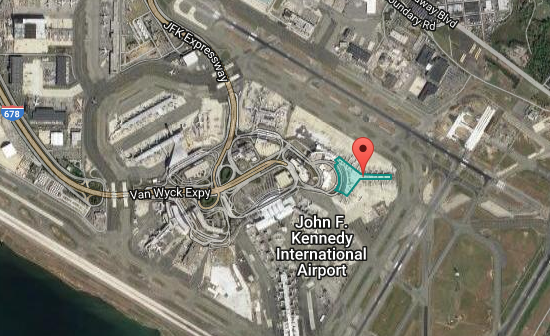Celebrated in The Drum as one of 50 women under 30 disrupting the digital space, Amy Fox has risen the ranks to become Blis’ global Head of Product and a pivotal part of our leadership team. We sat down with her to discuss the biggest trends and challenges facing the industry today.
1. What would you say is the biggest challenge in location-based marketing today?
Our industry’s biggest challenge is ensuring accuracy. We’ve all experienced the limits of geolocation: Our Uber driver can’t find us because our pin is off, or that little blue dot on Google Maps is leading us in the wrong direction.
But pinpointing exactly where consumers are and where they are going is paramount to what we do. It’s also key to delivering highly effective marketing campaigns. Unfortunately, not all location data provides the same level of precision, and a tiny error can make a huge difference.
Let’s say a fast-food restaurant located in JFK airport wants to target potential customers. If the data isn’t specifically identifying people within the airport’s boundaries, the brand may be targeting someone on the nearby highway instead of a man going through security.
2. How is Blis addressing this challenge?
Blis has put accuracy front and centre since we first began offering location-based targeting in the early 2000s. One thing we’ve learned is that accuracy starts with data gathering. In order to make sure we’re collecting the best data possible, we employ several methods, choosing the one that best suits the campaign’s goals.
In the JFK example, we would decide to draw a polygon around it. This means we’d manually draw lines around the perimeter of the airport on a map. In fact, our database has over 10 million polygons already mapped out, accumulated over the 5 years we’ve been using this methodology.
3. What is a polygon and how does it work?
Simply put, a polygon is a shape with at least three sides, but the ones we work with generally have a lot more. Drawing a polygon means outlining the shapes we see when we take a bird’s eye view of buildings and other locations. A store, stadium or airport can rarely be mapped out into perfect squares or circles, so drawing polygons enables us to ringfence highly specific locations.

4. Is drawing polygons always the best choice for data collection and targeting?
Not necessarily. Sometimes isolating an exact location with precise borders isn’t what’s needed for a specific campaign. If a coffee shop wants to target people nearby, for instance, we may prefer the point and radius system. This means we identify a location based on an address, drop a pin in the centre and draw a circle around it.
This technique is very scalable: If the coffee shop is a chain, we can use it to target people within 25 meters of any of its locations. And unlike drawing polygons, this approach can be executed almost immediately by simply uploading information about the shop locations and setting the campaign parameters. We can also adjust campaigns easily by increasing or decreasing the radius.
The polygon approach, on the other hand, can provide more detailed or precise information about location, such as indicating whether an individual is inside or outside a building. For example, it can enable a fast-food restaurant to distinguish between a woman who’s inside a luxurious, 5-star hotel having lunch or a father walking down the high street with his kids.
5. As long as you collect data correctly and target according to a campaign’s specific goals, your location data will be accurate?
I wish it were that easy! But in addition to collecting data effectively, we also filter out suspicious or imperfect data—sometimes culling up to 85% of all data collected daily. We make accuracy a priority at every stage of a marketing campaign, and that goes well beyond collection.
5. How do you see this challenge—and its solutions—developing in the future?
Whether it’s drawing polygons or using the radius method, the strategies and technology Blis use to collect data and target consumers are really advanced. I can’t imagine it changing significantly, though I’m sure we’ll see it evolve to become more refined with time.
In the future, the industry is going to have to improve its criteria for data accuracy—and we aim to set the highest industry standards. Not only are our methods for data gathering best-in-class, but our data scientists are doing really impressive work to filter out faulty data. Vendors and marketers shouldn’t settle for anything less than high-quality, accurate data. The result will be increased revenues for brands and better ad experiences for consumers.




